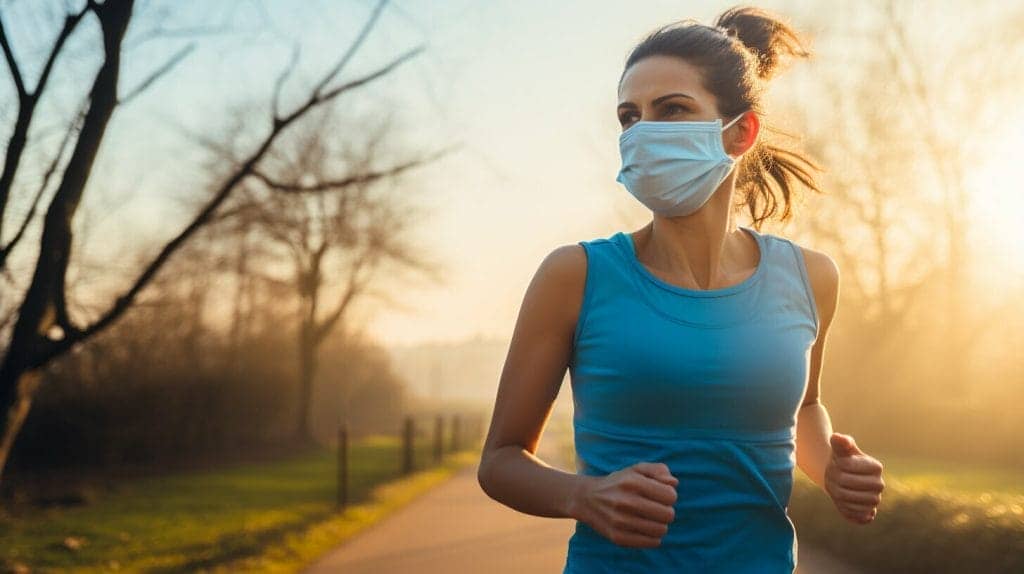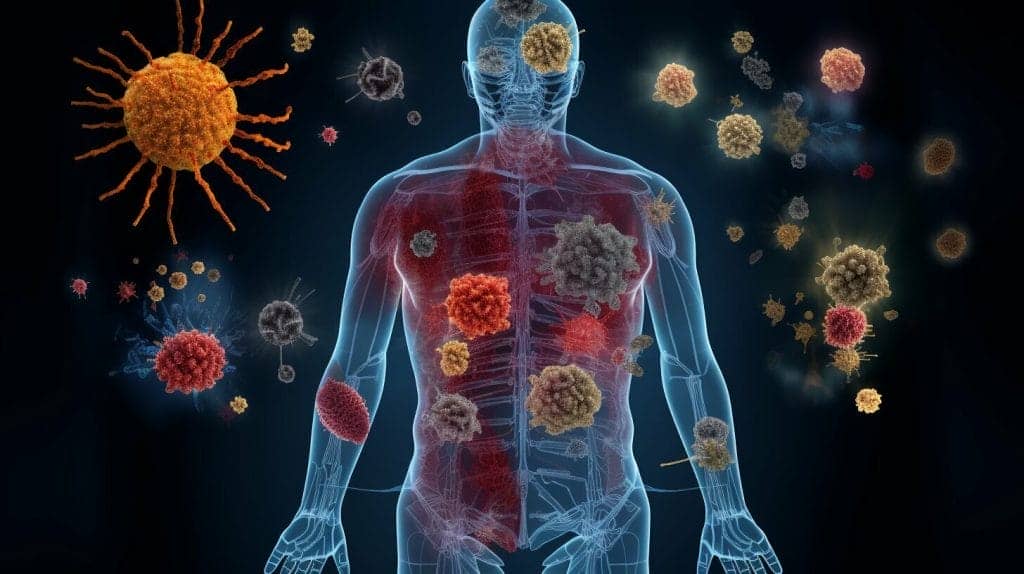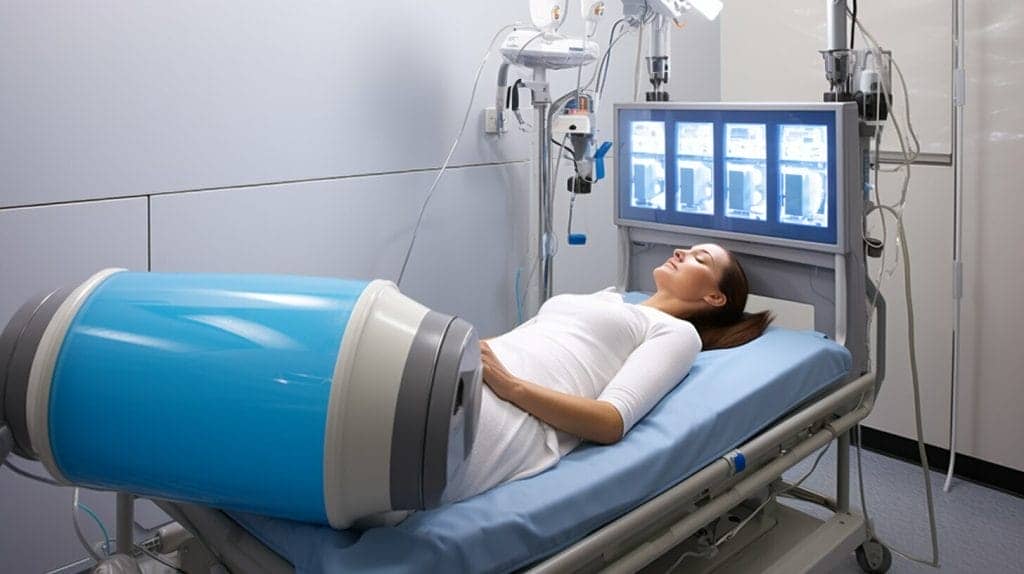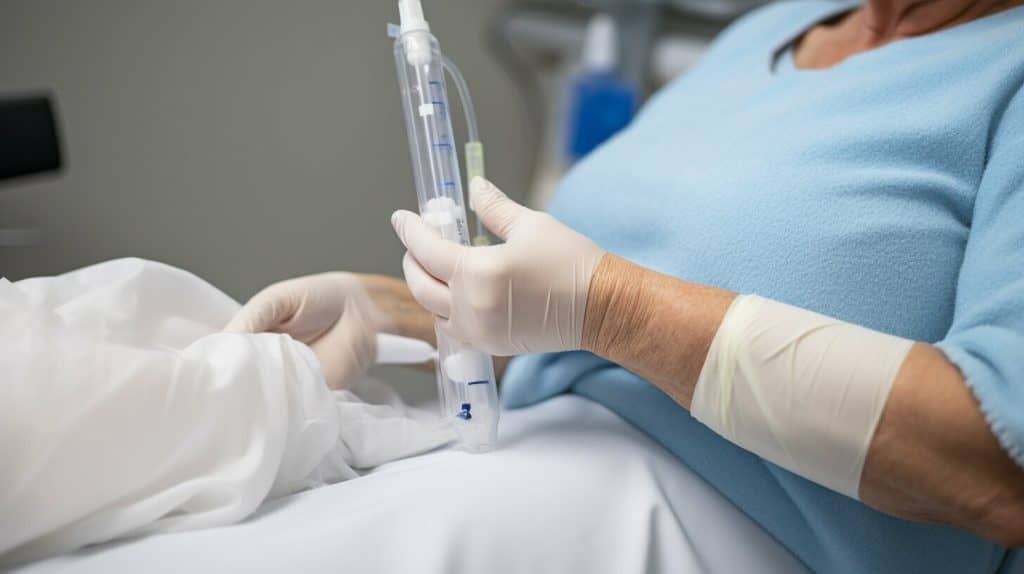The COVID-19 pandemic has affected many aspects of daily life, including physical activity routines. For individuals who have recovered from COVID-19 and are looking to return to running, it is important to take a gradual and safe approach.
Returning to running after experiencing COVID-19 can be challenging and requires careful planning. It is crucial for individuals to prioritize their health and listen to their bodies. In this section, we will provide tips and guidance for a successful and safe return to running after COVID-19.
Key Takeaways:
- Returning to running after COVID-19 requires a gradual and safe approach.
- It is important to prioritize your health and listen to your body.
- In this section, tips and guidance will be provided for a successful and safe return to running after recovering from COVID-19.
Importance of a Gradual Approach
Returning to running after recovering from COVID-19 requires a cautious and gradual approach. It’s essential to start with a slow and easy pace and gradually increase intensity and duration to prevent overexertion and injury. Going too hard too soon can cause setbacks in your recovery process, and it’s essential to be patient and gentle with your body.
Building up stamina and endurance is a gradual process that requires consistent practice. It is crucial to listen to your body’s signals and adjust your running routine accordingly. Returning to running after COVID-19 necessitates a different approach than starting from scratch since your body is still recovering.
Guidelines for a Gradual Approach
Here are some guidelines that can help you build up your running routine gradually after recovering from COVID-19:
| Week | Activity | Duration | Intensity |
|---|---|---|---|
| 1-2 | Brisk walking | 20-30 minutes | Low |
| 3-4 | Light jogging | 10-15 minutes | Low |
| 5-6 | Slow running | 20-30 minutes | Low-moderate |
| 7-8 | Moderate running | 30-45 minutes | Moderate |
| 8+ | Gradually increase duration and intensity | Varies | Varies |
It’s essential to pay attention to your body’s response and adjust your routine accordingly. If you experience any discomfort or pain, it’s time to reduce the intensity or duration of your runs.
Listen to Your Body
Being cautious and aware of your body’s signals is crucial when returning to running after recovering from COVID-19. The virus can have long-term effects on your respiratory system, making it harder for you to breathe during physical activities.
While it may be tempting to push yourself to resume your pre-COVID running routine, it is important to take it slow and listen to your body’s needs. If you experience shortness of breath, dizziness, chest pain, or any other discomfort while running, slow down or stop immediately.
It’s recommended that you start with short, easy runs and gradually increase the intensity and duration over time. Monitor your heart rate and breathing rate during exercise and adjust your pace accordingly.
In addition, incorporating breathing exercises into your routine can also help improve your lung function and support your respiratory recovery. You can try slow and deep breathing techniques, or consult with a medical professional for specific exercises tailored to your needs.
Consult with a Medical Professional
It is important to seek guidance from a medical professional before returning to running after recovering from COVID-19. Consulting with a doctor can help assess the individual’s overall health and fitness level to determine when it is safe to resume running.
Dr. Francisco Contreras, MD at Oasis Medical Institute in Tijuana, MX, is a highly respected medical professional who specializes in integrative treatments for COVID-19. He can provide personalized guidance and advice for individuals in need of a safe and successful return to running after COVID-19.
At Oasis Medical Institute, a holistic approach is taken towards medicine, where the patient’s overall well-being is considered, rather than just their illness. Consultations can be booked online or by phone for those seeking additional support and guidance in their recovery journey.
Assess Your Fitness Level
Before returning to running after recovering from COVID-19, it is important to assess your current fitness level. This will help you determine what type of post-COVID-19 running program is appropriate for you. It is also an opportunity to identify areas where you may need to focus on building endurance, strength, or flexibility before incorporating running into your routine.
Cardiovascular Endurance: Start with low-impact cardio exercises, such as brisk walking or biking, for 20-30 minutes. Gradually increase the duration of these activities and monitor how you feel. When you can comfortably sustain 30-45 minutes of low-impact cardio without experiencing COVID-19 symptoms or excessive fatigue, you can consider incorporating running into your routine.
Muscular Strength: Do a series of bodyweight exercises, such as squats, lunges, and push-ups, to gauge your strength level. Begin with a few reps of each exercise and gradually increase the number of reps and sets as you feel comfortable. It is important to focus on proper form to avoid injury.
Flexibility:
Stretching exercises are essential for maintaining flexibility, which is important to reduce the risk of injury while running and improve overall performance. Start with simple stretches, such as the calf stretch, hamstring stretch, and quad stretch. Hold each stretch for 15-30 seconds and gradually increase the duration and intensity of the stretches as you feel comfortable.
Start with Light Cardio Exercises
Before transitioning back into running after recovering from COVID-19, it’s essential to start with light cardio exercises such as brisk walking or gentle cycling.
This low-impact cardio helps prepare the body for running while also reducing the risk of injuries. It allows the cardiovascular system to adjust gradually without overexertion and helps build endurance and stamina to safely get back into running again.
Guidelines for light cardio exercises
Here are some guidelines to follow when starting with light cardio exercises:
| Exercise | Duration | Frequency |
|---|---|---|
| Brisk Walking | 20-30 mins | 3-5 times/week |
| Gentle Cycling | 20-30 mins | 3-5 times/week |
Remember, it’s crucial to listen to your body and not push too hard too soon. If you experience any unusual discomfort or pain, take a break and consult with a medical professional.
Warm-up and Cool-down Routine
A proper warm-up and cool-down routine is essential for a safe and successful return to running after recovering from COVID-19. Before running, it’s important to prepare the body by gradually increasing the heart rate and loosening up the muscles. After running, a cool-down routine helps the body recover and reduces the risk of injury.
Warm-up Exercises
Here are some warm-up exercises to prepare your body for running:
| Exercise | Description |
|---|---|
| Brisk walking or light jogging | Start with a slow pace and gradually increase your speed to get your heart rate up. |
| High-knee march | Lift your knees as high as possible while walking, swinging your arms in a natural motion. |
| Butt kicks | While jogging in place, try to kick your heels up to touch your glutes. |
| Lunges | Take a large step forward and bend your front knee, keeping your back leg straight. Alternate legs. |
| Leg swings | Stand perpendicular to a wall and swing your outside leg back and forth while keeping your core engaged. Repeat on the other side. |
Perform each exercise for 30 seconds to 1 minute, gradually increasing the intensity.
Cool-down Stretches
After running, it’s important to cool down gradually and stretch your muscles to reduce soreness and prevent injury. Here are some cool-down stretches:
| Stretch | Description |
|---|---|
| Quad stretch | Stand on one leg and grab your ankle with the same-side hand, pulling your heel toward your glutes. Hold for 15-30 seconds and repeat on the other leg. |
| Hamstring stretch | Sit on the ground with one leg extended and the other bent. Reach toward your toes on the extended leg, keeping your back straight. Hold for 15-30 seconds and repeat on the other leg. |
| Calf stretch | Stand facing a wall with one foot forward and one foot back. Lean into the wall, keeping your rear foot flat on the ground, to stretch your calf. Hold for 15-30 seconds and repeat on the other side. |
| Hip flexor stretch | Kneel on one knee and bring your other foot forward, bending at the knee. Slowly push your hips forward until you feel a stretch in your hip flexor. Hold for 15-30 seconds and repeat on the other leg. |
| IT band stretch | Stand with your feet shoulder-width apart, cross your left leg over your right, reach up with your left arm, and lean to the right. Hold for 15-30 seconds and repeat on the other side. |
Perform each stretch for 15-30 seconds, gradually increasing the duration as you become more flexible.
Choose Proper Running Shoes
Choosing the right running shoes is crucial for runners returning to exercise after recovering from COVID-19. The right shoes provide proper support and cushioning, which helps to prevent foot and leg injuries while running.
When selecting running shoes, it’s important to consider various factors, such as comfort, fit, stability, and functionality. COVID-19 may affect the respiratory system, so it may be necessary to pay attention to how your feet feel while running.
Comfort: Running shoes should be comfortable and snug, with enough room for your toes to move freely. A good fit ensures that your feet do not move inside the shoes when running.
Fit: It’s important to get the right fit for your feet. Running shoes come in various sizes, and finding the right one is essential for running safely and comfortably after COVID-19.
Stability: Stability features in running shoes help to prevent injuries, especially if you have any residual weakness or post-viral fatigue. The shoes should be flat and provide ample support to keep the ankle in place.
Functionality: Running shoes should be designed for running. Be sure to select shoes that are appropriate for your running style and the type of terrain you’ll be running on. For example, if you plan to run on pavement, trail running shoes may not be the best option for you.
When returning to running after COVID-19, it may be useful to consider getting fitted for shoes by a professional. This ensures that you get the right fit and the most suitable shoe for your running style and needs.
Incorporate Strength Training
Strength training is an essential element in the running routine after recovering from COVID-19. It helps rebuild muscle strength, prevent muscle imbalances, and enhance overall running performance.
Here are some examples of strength training exercises that runners can do to improve their muscle strength:
| Exercise | Muscle Group |
|---|---|
| Squats | Glutes, quadriceps, hamstrings |
| Lunges | Glutes, quadriceps, hamstrings |
| Planks | Core muscles |
| Push-ups | Chest, arms, core muscles |
| Single-leg deadlifts | Glutes, hamstrings, lower back |
It is recommended to incorporate strength training exercises at least twice a week, ideally on non-consecutive days. Start with two to three sets of 10-12 repetitions of each exercise, gradually increasing the weight or resistance as muscle strength improves.
Note: It is important to maintain proper form during strength training exercises to prevent injury. Consider consulting a personal trainer or fitness professional to ensure proper technique.
Hydration and Nutrition
Proper hydration and nutrition are vital for a successful return to running after COVID-19. It’s important to fuel your body with the right nutrients to support recovery and enhance performance.
Staying hydrated is crucial, especially during and after running. Drink water regularly throughout the day, and aim to consume at least 8-10 cups per day. During runs, carry a water bottle or plan your route near drinking fountains if possible.
When it comes to nutrition, focus on incorporating whole foods into your diet and avoid processed foods and sugary drinks. Consume a balanced mix of carbohydrates, proteins, and healthy fats to support your running and recovery. Foods rich in antioxidants, such as fruits and vegetables, can also aid in reducing inflammation and promoting healing.
Consuming a pre-run snack or meal can provide the necessary energy and fuel for your run. Opt for easily digestible foods such as bananas, oatmeal, or a smoothie. After running, aim to eat a healthy meal containing carbohydrates and protein to replenish your body.
Overall, listen to your body’s signals and adjust your hydration and nutrition accordingly. Keeping your body properly nourished can help you achieve a safe and successful return to running after COVID-19.
Monitor and Manage Fatigue
As you return to running after recovering from COVID-19, it’s important to monitor your fatigue levels and adjust your pace accordingly. It’s common to experience fatigue and decreased stamina during the recovery process, so it’s essential to listen to your body and avoid overexertion.
One effective way to monitor fatigue is by tracking your heart rate during exercise. Using a heart rate monitor can help you keep your intensity level in check and avoid pushing yourself too hard. Additionally, pay attention to any signs of excessive tiredness, such as muscle soreness or shortness of breath, and adjust your running routine as needed.
It’s also important to balance running with other forms of exercise and rest. Incorporate rest days into your routine to allow your body time to recover and rebuild. Consider cross-training with low-impact exercises such as stretching, yoga, or swimming to build endurance and maintain fitness without putting stress on your body.
By monitoring and managing your fatigue levels, you can gradually build up your running stamina and avoid setbacks or injuries during your recovery journey.
Join a Supportive Community
Recovering from COVID-19 can be a lonely and challenging experience, but joining a supportive running community can make the journey easier.
Whether it’s through an online platform or a local group, finding a supportive community of fellow runners can provide the motivation and accountability needed to stay on track with a running routine. Sharing experiences and tips with others who have gone through similar struggles can also create a sense of camaraderie and belonging.
The Benefits of a Running Buddy
In addition to joining a community, finding a running buddy can also be extremely helpful in getting back into running after COVID-19. A running partner can provide encouragement and support while also ensuring safety during runs. Running with a buddy can also make the experience more enjoyable and help pass the time during longer runs.
When looking for a running buddy, consider finding someone with similar fitness levels and goals. It’s important to communicate and make sure expectations and schedules align to create a successful partnership.
Overall, joining a supportive community or finding a running buddy can provide the necessary encouragement and accountability to make a safe and successful return to running after COVID-19.
Track and Celebrate Progress
One important aspect of returning to running after COVID-19 is tracking and celebrating progress. By monitoring improvements and marking milestones, runners can stay motivated and encouraged to continue their recovery journey.
There are several ways to track progress, such as using a running app or journal to record distance, time, and pace. This allows runners to see improvements over time and set new goals.
Celebrating progress is also important for maintaining motivation. Whether it’s completing a longer distance or running at a faster pace, acknowledging accomplishments can provide a sense of accomplishment and confidence in the recovery process.
Remember, progress may be slow at first, but with patience and persistence, runners can achieve their goals and return to running safely after COVID-19.
Stay Informed and Adapt
It is important to stay up to date with the latest guidelines and recommendations for running after recovering from COVID-19. As the situation and information continue to evolve, it is essential to adapt your running routine accordingly.
One way to stay informed is to consult with a medical professional, such as Dr. Francisco Contreras MD at Oasis Medical Institute in Tijuana, MX. Their integrative approach to medicine for COVID-19 may provide additional insight and guidance on safely returning to running.
Additionally, it is crucial to remain mindful of your own health and well-being. Listen to your body and adjust your running routine as needed to prevent overexertion and promote effective recovery.
“Adapting your running routine during the recovery process is key to achieving a safe and successful return. Don’t be afraid to make necessary adjustments and seek guidance from medical professionals.”
By staying informed and adapting, you can confidently and safely return to running after recovering from COVID-19.
Conclusion
Returning to running after recovering from COVID-19 can be a challenging but rewarding journey. It’s important to approach it gradually and safely by starting with light cardio exercises, building up stamina and endurance, and listening to your body to avoid overexertion and prevent injury.
Consulting with a medical professional, such as Dr. Francisco Contreras MD at Oasis Medical Institute in Tijuana, MX, can also provide valuable guidance and support throughout the recovery process.
It’s crucial to assess your current fitness level, choose proper running shoes, and incorporate strength training exercises into your routine to rebuild muscle strength and prevent imbalances. Hydration and nutrition play a significant role in supporting recovery and enhancing performance, so it’s essential to stay hydrated and fuel the body with nutritious foods.
Stay Informed and Connected
Monitoring and managing fatigue, joining a supportive community, and tracking progress can help keep you motivated and accountable throughout the recovery journey. Finally, staying informed about the latest guidelines and recommendations for running after recovering from COVID-19 and adapting your routine as needed based on updated information and personal health considerations is essential.
By adopting a holistic approach and following these tips and guidelines, returning to running after COVID-19 can be a safe and successful comeback.
FAQ
Q: How soon can I start running again after recovering from COVID-19?
A: It is important to consult with a medical professional before starting to run again. They can assess your individual situation and advise on the appropriate time to resume running. Generally, you should wait until you have fully recovered and received clearance from your healthcare provider.
Q: Should I start running at the same intensity as before COVID-19?
A: No, it is important to take a gradual approach. Start with light cardio exercises and slowly increase the intensity and duration of your runs. This will help prevent overexertion and reduce the risk of injury.
Q: How can I assess my fitness level before starting to run again?
A: You can assess your cardiovascular endurance, muscular strength, and flexibility by performing simple exercises. Take note of how easily you can perform activities like walking briskly or doing squats. This will help you gauge your starting point and set realistic goals.
Q: What are some warm-up exercises I should include before running?
A: Before running, it is important to warm up your muscles and prepare your body for exercise. Some warm-up exercises you can include are leg swings, high knees, and lunges. These exercises help increase blood flow and loosen up your muscles.
Q: How do I choose the right running shoes after recovering from COVID-19?
A: When choosing running shoes, focus on comfort, fit, and functionality. Look for shoes that provide proper support and cushioning for your feet. It may be beneficial to consult with a specialist at a running store to ensure you find the best shoes for your needs.
Q: Should I incorporate strength training into my running routine?
A: Yes, incorporating strength training exercises can help rebuild muscle strength and prevent imbalances. Focus on exercises that target the muscles used during running, such as squats, lunges, and calf raises. Remember to start with light weights and gradually increase as your strength improves.
Q: How important is hydration and nutrition for running after COVID-19?
A: Hydration and proper nutrition are crucial for a successful return to running. Stay hydrated by drinking water before, during, and after your runs. Fuel your body with nutritious foods that provide the necessary energy and nutrients for recovery and performance.
Q: How can I monitor and manage fatigue while running after recovering from COVID-19?
A: Pay attention to your body’s signals and adjust your running routine accordingly. If you experience excessive fatigue, take a rest day or reduce the intensity and duration of your runs. Listen to your body and prioritize rest and recovery to avoid overexertion.
Q: Are there any online communities or local groups I can join for support?
A: Yes, joining a supportive running community or finding a running buddy can provide motivation and accountability during your recovery journey. Look for online platforms, social media groups, or local running clubs to connect with fellow runners.
Q: How can I track my progress while running after recovering from COVID-19?
A: Use a running app or a fitness tracker to monitor your distance, pace, and progress over time. Celebrate milestones achieved, such as increased mileage or faster times, to stay motivated and encouraged on your journey.
Q: How can I stay informed about the latest guidelines for running after recovering from COVID-19?
A: Stay updated on the latest guidelines and recommendations from trusted sources such as healthcare authorities and running organizations. Be open to adapting your running routine as needed based on new information and your personal health considerations.
Dr. Francisco Contreras, MD is a renowned integrative medical physician with over 20 years of dedicated experience in the field of integrative medicine. As the Medical Director of the Oasis of Hope Hospital in Tijuana, Mexico, he has pioneered innovative treatments and integrative approaches that have been recognized globally for the treatment of cancer, Lyme Disease, Mold Toxicity, and chronic disease using alternative treatment modalities. Dr. Contreras holds a medical degree from the Autonomous University of Mexico in Toluca, and speciality in surgical oncology from the University of Vienna in Austria.
Under his visionary leadership, the Oasis of Hope Hospital has emerged as a leading institution, renowned for its innovative treatments and patient-centric approach for treating cancer, Lyme Disease, Mold Toxicity, Long-Haul COVID, and chronic disease. The hospital, under Dr. Contreras's guidance, has successfully treated thousands of patients, many of whom traveled from different parts of the world, seeking the unique and compassionate care the institution offers.
Dr. Contreras has contributed to numerous research papers, articles, and medical journals, solidifying his expertise in the realm of integrative medicine. His commitment to patient care and evidence-based treatments has earned him a reputation for trustworthiness and excellence. Dr. Contreras is frequently invited to speak at international conferences and has been featured on CNN, WMAR2 News, KGUN9 News, Tyent USA, and various others for his groundbreaking work. His dedication to the medical community and his patients is unwavering, making him a leading authority in the field.
Contreras has authored and co-authored several books concerning integrative therapy, cancer, Lyme Disease and heart disease prevention and chronic illness, including "The Art Science of Undermining Cancer", "The Art & Science of Undermining Cancer: Strategies to Slow, Control, Reverse", "Look Younger, Live Longer: 10 Steps to Reverse Aging and Live a Vibrant Life", "The Coming Cancer Cure Your Guide to effective alternative, conventional and integrative therapies", "Hope Medicine & Healing", "Health in the 21st Century: Will Doctors Survive?", "Healthy Heart: An alternative guide to a healthy heart", “The Hope of Living Cancer Free”, “Hope Of Living Long And Well: 10 Steps to look younger, feel better, live longer” “Fighting Cancer 20 Different Ways”, "50 Critical Cancer Answers: Your Personal Battle Plan for Beating Cancer", "To Beat . . . Or Not to Beat?", and “Dismantling Cancer.”






















